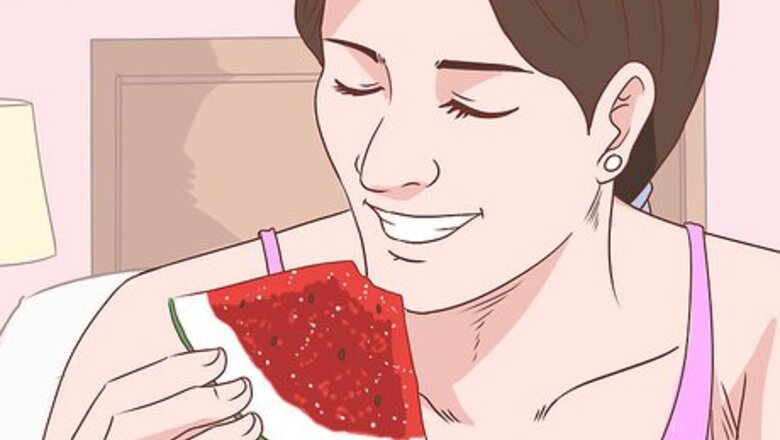
views
Lifestyle Tips

Load up on antioxidants to protect your corneas. Keratoconus could be caused or worsened by oxidative stress, which happens when chemicals called free radicals enter your body. Make sure to include plenty of antioxidants in your diet. These are vitamins that work against free radicals. Good antioxidant sources include leafy green vegetables, berries, citrus fruits, carrots, shellfish, poultry, and tea. Some of the most important antioxidants are vitamins C and E, carotenoids, selenium, and zinc. Good antioxidant sources include fruits, leafy green vegetables, beans, soy, seafood, lean meats, and tea. Mix some of these into your diet every day.
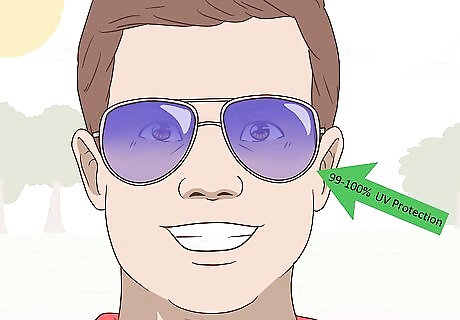
Wear 100% UV-blocking sunglasses every time you go outside. Damage from UV rays could damage your eyes and make keratoconus worse. Always wear 100% UV-blocking glasses to prevent your condition from getting worse. If you wear corrective glasses, then you’ll probably need prescription sunglasses as well. Otherwise, your vision won’t be as sharp. You can ask your eye doctor for sunglasses recommendations if you aren’t sure what the best types are.
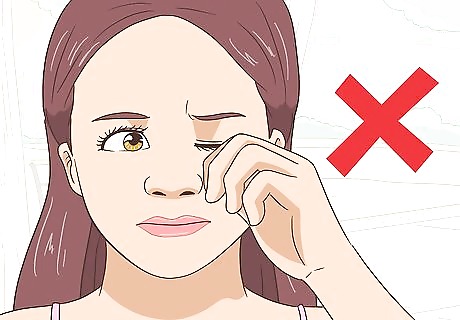
Avoid scratching or rubbing your eyes. Any damage to your eye could make keratoconus worse. If you have a habit of rubbing your eyes, do your best to stop. Chronic eye-rubbing is a common way that people accidentally damage their eyes. Always wear goggles or some kind of eye protection if you're using power tools, cleaning, playing sports, using chemicals, or doing anything else where something might get in your eye as well.
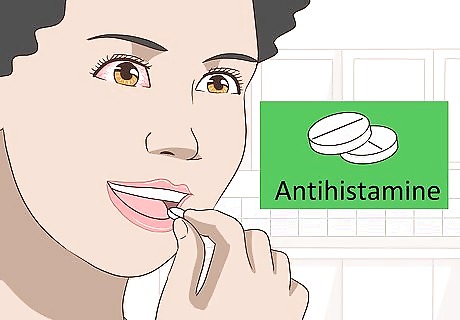
Keep your allergies under control. Seasonal allergies can inflame your eyes and also make you rub or scratch them. If you often experience allergies, then keep them under control with antihistamine medications and avoiding allergens like pollen. There are also some steps you could take to prevent your allergies naturally. If you have trouble keeping your allergies under control, see an allergist. You may need shots to reduce your allergy sensitivities.
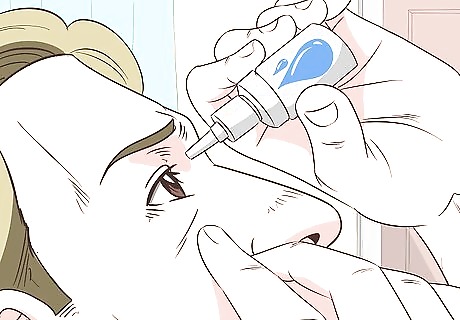
Moisten your eyes with artificial tears if they’re dry. Dry, irritated eyes could also damage your cornea and make keratoconus worse. You can relieve dry eyes with artificial tears and protect them from irritation.
Medical Treatments
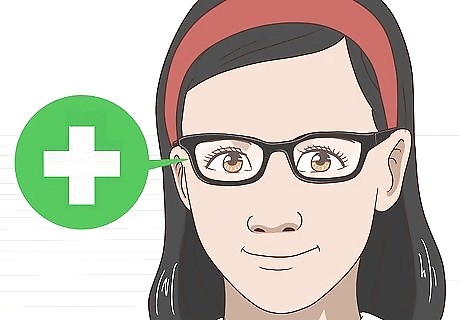
Visit an eye doctor for prescription glasses or contacts. Corrective lenses can usually help patients with early keratoconus see better. These will improve your vision and help you live as normally as possible. Visit your eye doctor for an exam and they will prescribe the right corrective lenses for you. The lens types that your eye doctor prescribes depends on how far the condition has progressed. In the early stages, regular glasses or soft contact lenses are fine. Hard contact lenses shaped to fit your eye come next. Scleral lenses that can adjust to the shape of your eye are used in advanced cases. Your eye doctor may also try hybrid lenses with a hard rim and soft core to make you more comfortable. If the keratoconus is in its early stages, you should still be able to wear contact lenses. If it’s progressed, then you might not be able to properly put the lenses into your eyes. You'll probably have to change your prescription often if the condition progresses.
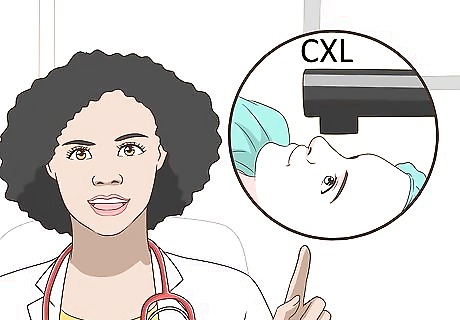
Strengthen your cornea with a corneal cross-linking procedure. Cross-linking (CXL) is used for more advanced cases of keratoconus and could preserve your cornea’s shape and strength. The eye doctor will pour a vitamin B solution into your eyes and then expose it to UV light for 15-30 minutes. This process strengthens the cornea, which could prevent the condition from getting worse and might even improve your eyesight.
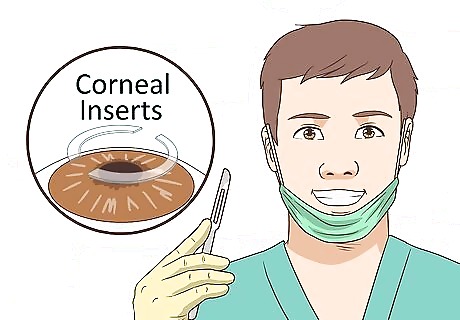
Correct the shape of your cornea with corneal implants. If your condition has progressed, your cornea may have high astigmatism. This makes your vision blurry and prevents you from wearing contacts. Your eye doctor can help reduce this problem with corneal inserts to flatten your cornea. They will place small rings on your eyes to correct their shape. This could improve your vision and make it easier to wear contacts. Your eye doctor will give you after-care instructions to follow when you get home. Always follow these directions so you don’t damage the implants. Corneal inserts are removable, so this isn’t a permanent measure.
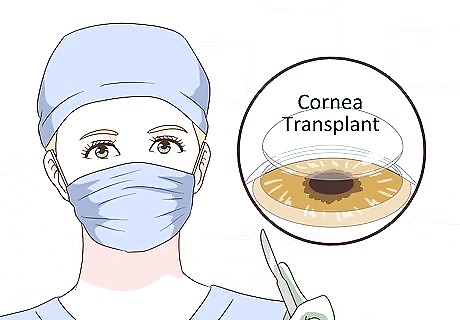
Have a corneal transplant for advanced cases. This is usually the last option for serious keratoconus cases. During this procedure, the eye doctor will remove your damaged cornea and replace it with a donor cornea. As the new cornea heals, your vision should improve. Most people still have to wear glasses for 3-6 months after the surgery, because it takes time for the new cornea to bond with your eye. After this point, your vision might improve enough to stop wearing glasses.














Comments
0 comment